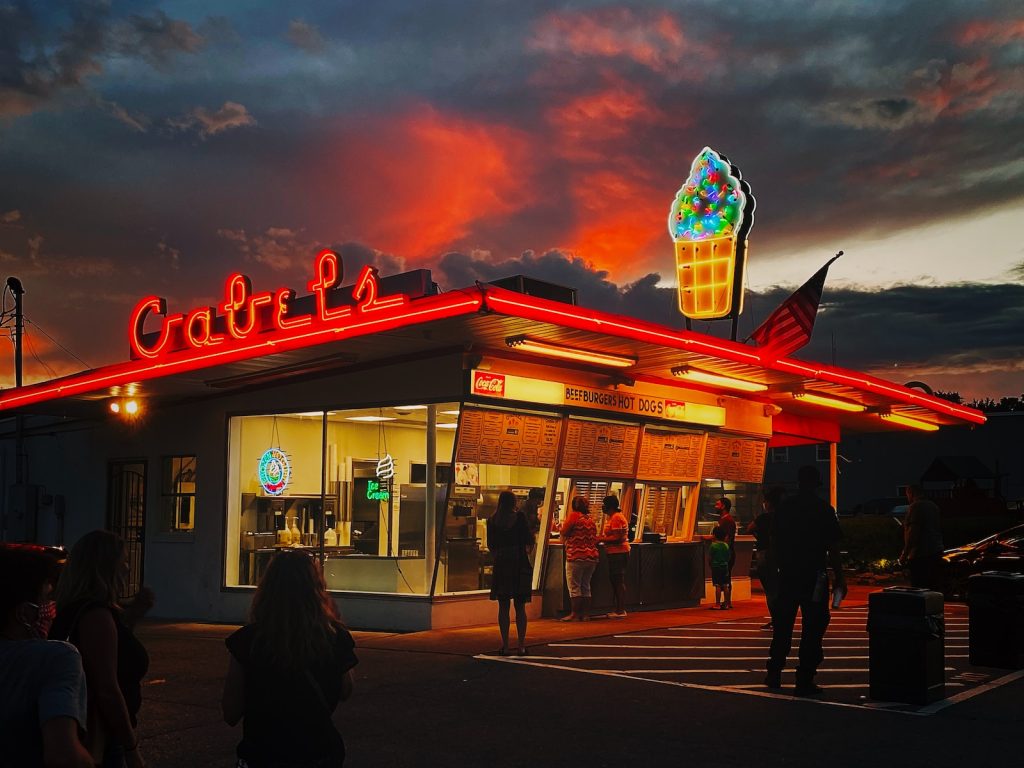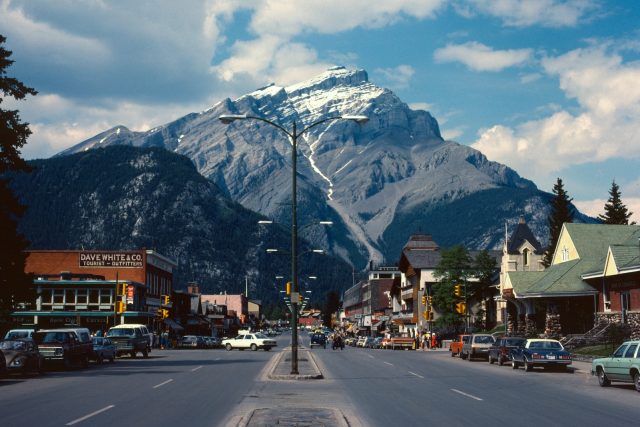Introduction
Small towns and villages are the heartbeat of America. From the quaint streets and charming storefronts to the tight-knit communities and friendly faces, small towns offer a glimpse into a simpler way of life that is often lost in larger cities. But these communities are more than just picturesque postcards. They are the backbone of American history and culture, representing diverse traditions, values, and stories that have helped shape the nation as we know it today. In this blog post, we will explore the rich history and culture of America’s small towns and villages, from the rugged mountains of Appalachia to the rolling plains of the Midwest and beyond. So grab a cup of coffee, sit back, and join us as we take a journey through some of the most fascinating and unique communities in the United States.
The Historical Roots of Small Towns and Villages
The historical roots of small towns and villages in America can be traced back to the earliest days of European settlement. As colonists pushed westward, they established small communities that served as hubs for trade, agriculture, and social interaction. Over time, these communities grew and evolved, adapting to their residents’ changing needs and demands.
One of the primary reasons why people settled in small towns and villages was the availability of land. As the population of the United States grew, people sought out new areas in which to establish homes and businesses. Small towns and villages provided a sense of community and security and access to resources such as water, timber, and fertile land for agriculture.
Small towns and villages also played a significant role in the expansion of the American frontier. As settlers moved westward, they established new communities that served as waypoints for travelers and traders. These communities often played a critical role in opening new territories, as they provided the infrastructure necessary to support further development and settlement.
In addition to their role in frontier expansion, small towns and villages were also important centers of industry and commerce. As the United States industrialized in the late 19th and early 20th centuries, small towns and villages often served as hubs for manufacturing and production. Many of these communities developed specialized industries that catered to regional or national markets, such as textiles, lumber, or mining.
Small towns and villages have made numerous contributions to the national history of the United States. They have served as centers of innovation, creativity, and social change, producing some of the country’s most famous writers, artists, and musicians. They have also been at the forefront of social justice and equality movements, such as the Civil Rights Movement of the 1950s and 1960s.
The historical roots of small towns and villages in America are complex and multifaceted. These communities have played an essential role in the country’s development and expansion, serving as hubs of commerce, industry, and innovation. Despite their many challenges in the modern era, small towns and villages remain integral to American culture and history. Their contributions to the national story will continue to be celebrated and cherished for generations to come.
Cultural Diversity in Small Towns and Villages
Small towns and villages in America are often celebrated for their unique cultural diversity. Despite their small size, these communities are home to people from a wide range of ethnic, religious, and linguistic backgrounds. Many factors, including historical migration patterns, economic opportunity, and the influence of local traditions and customs, shape the diversity of small towns and villages.
Ethnicity is one of the most significant drivers of cultural diversity in small towns and villages. Many communities have long-standing ethnic enclaves, where immigrants from particular regions or countries have settled and established their own distinct cultural traditions. For example, many small towns and villages in the Midwest have strong German or Scandinavian roots, while towns in the Southwest may have significant Hispanic or Native American populations.
Religion also plays a significant role in shaping the cultural landscape of small towns and villages. Many communities have a dominant religious tradition that influences the local customs and social norms. For example, many small towns and villages in the South have a strong Baptist or Methodist heritage, while towns in the Northeast may have a strong Catholic or Jewish presence.
Language is another important factor in the cultural diversity of small towns and villages. Many communities have distinct linguistic traditions that are passed down through generations. For example, many small towns and villages in Louisiana have a strong French or Cajun influence, while towns in Texas may have a strong Spanish or Mexican heritage.
Immigration has played a critical role in shaping the cultural diversity of small towns and villages in America. Throughout history, waves of immigrants have settled in small communities across the country, bringing with them their own unique customs and traditions. These customs often evolve over time as they mix with local traditions, creating unique cultural heritage blends. For example, many small towns and villages in the Midwest have strong Polish or Italian roots, while towns in the West may have significant Asian or Pacific Islander populations.
One of the most significant ways in which cultural diversity is celebrated in small towns and villages is through unique folk festivals and events. These festivals often celebrate local traditions and customs, such as traditional music, dance, and food. For example, the Oktoberfest celebrations in many small towns and villages across the Midwest are a nod to the German heritage of many communities. In contrast, the Mardi Gras celebrations in Louisiana towns celebrate the region’s French and Cajun traditions.
In conclusion, the cultural diversity of small towns and villages in America is a testament to these communities’ rich history and unique traditions. From ethnicity and religion to language and local customs, the diversity of small towns and villages is shaped by many factors, including immigration, economic opportunity, and the influence of local traditions. Despite their small size, these communities offer a window into the complex tapestry of American culture and history.
Artistic Expressions in Small Towns and Villages
Artistic expressions are essential to the cultural fabric of small towns and villages in America. Despite their relatively isolated locations, these communities have produced a wealth of literary, musical, and artistic talent, reflecting these rural areas’ unique traditions and values.
Many small towns and villages have produced literary figures who have left an indelible mark on American literature. Perhaps the most famous example is Mark Twain, who grew up in Hannibal, Missouri, and drew heavily on his experiences in rural America in his writing. Other notable literary figures from rural areas include Willa Cather, who drew on her experiences growing up on the Nebraska plains in her novels, and Eudora Welty, who captured the essence of Southern life in her short stories.
Music is another important form of artistic expression associated with small towns and villages. Many genres of music have their roots in rural areas, including bluegrass, country, and folk. These musical traditions often reflect the values and experiences of rural communities, such as hard work, family, and the beauty of the natural world. Many small towns and villages host music festivals and concerts celebrating these traditions, drawing visitors from far and wide to experience the unique sounds of rural America.
Architecture is also an important expression of community values in small towns and villages. Many communities have unique architectural styles that reflect their history and traditions. For example, many small towns and villages in the South have distinctive antebellum homes that reflect the region’s plantation culture. In the Midwest, many communities have distinctive barns and other agricultural buildings that reflect the area’s farming heritage. These buildings are often preserved and celebrated as important to the community’s identity and history.
In conclusion, artistic expressions are a vital part of the cultural landscape of small towns and villages in America. From literature and music to architecture, these communities have produced a wealth of talent that reflects rural America’s unique traditions and values. Whether it’s the twang of a bluegrass banjo or the pages of a beloved novel, the artistic expressions of small towns and villages offer a glimpse into the heart and soul of America’s rural communities.
The Challenges Facing Small Towns Today

Small towns and villages across America face several challenges in the 21st century, from economic decline to a lack of resources and infrastructure. One of the most pressing challenges is rural decline, which is often expressed through vacant storefronts and a general sense of disinvestment in local communities. However, new solutions are emerging that are helping to revitalize small-town economies and build stronger, more vibrant communities.
One of the key drivers of rural revitalization in recent years has been the rise of social media and digital platforms. These platforms have made it easier than ever for small businesses to connect with customers and promote themselves online, regardless of their location. This has enabled many small towns to attract new startups and entrepreneurs looking for affordable, flexible spaces to launch their businesses. With the help of social media and digital marketing, these businesses can reach customers worldwide, bringing new economic activity and energy to small-town communities.
Another important factor in revitalizing small towns is sharing solutions and ideas across communities. With the rise of online platforms and digital communities, it’s easier than ever for small towns to connect and learn from one another’s successes and challenges. This has led to the development of new community and economic growth models, such as community-led initiatives to repurpose vacant buildings and spaces or create shared workspaces and incubators to support local startups.
Despite these positive developments, small towns and villages still face significant challenges in the years ahead. From declining populations to a lack of infrastructure and resources, many obstacles need to be addressed to build sustainable, thriving communities. However, with new solutions and innovative approaches emerging all the time, there is reason for hope that small towns can continue to play a vital role in America’s economic and cultural landscape for generations to come.
Conclusion
In conclusion, America’s small towns and villages are rich in history, culture, and artistic expression. These communities have contributed in countless ways to the fabric of our nation, from frontier expansion and industrialization to the development of unique musical and literary traditions. However, they also face significant challenges in the 21st century, including rural decline and a lack of resources and infrastructure.
Despite these challenges, there is much to be gained from exploring America’s small towns and villages. By immersing ourselves in the unique cultural traditions of these communities, we can gain a deeper understanding of the values that bind us together as a nation. From hard work and family to a love of the natural world and a reverence for the past, these values are central to the identity of rural America.
Furthermore, by supporting the revitalization of small towns and villages, we can help build stronger, more resilient communities that are better equipped to meet future challenges. By sharing ideas, resources, and solutions across communities, we can build networks of support that enable small towns to thrive and grow.
Ultimately, the exploration of America’s small towns and villages is not just a journey through space but time, culture, and identity. By embracing the richness and diversity of rural America, we can gain a deeper appreciation of our shared heritage and a stronger sense of the values that unite us as a nation.






























